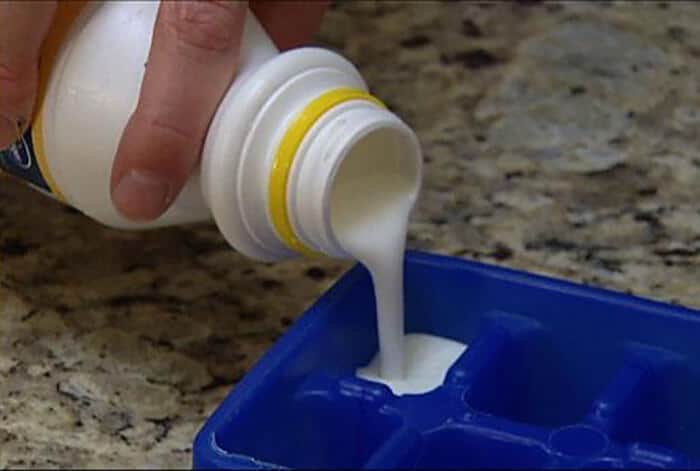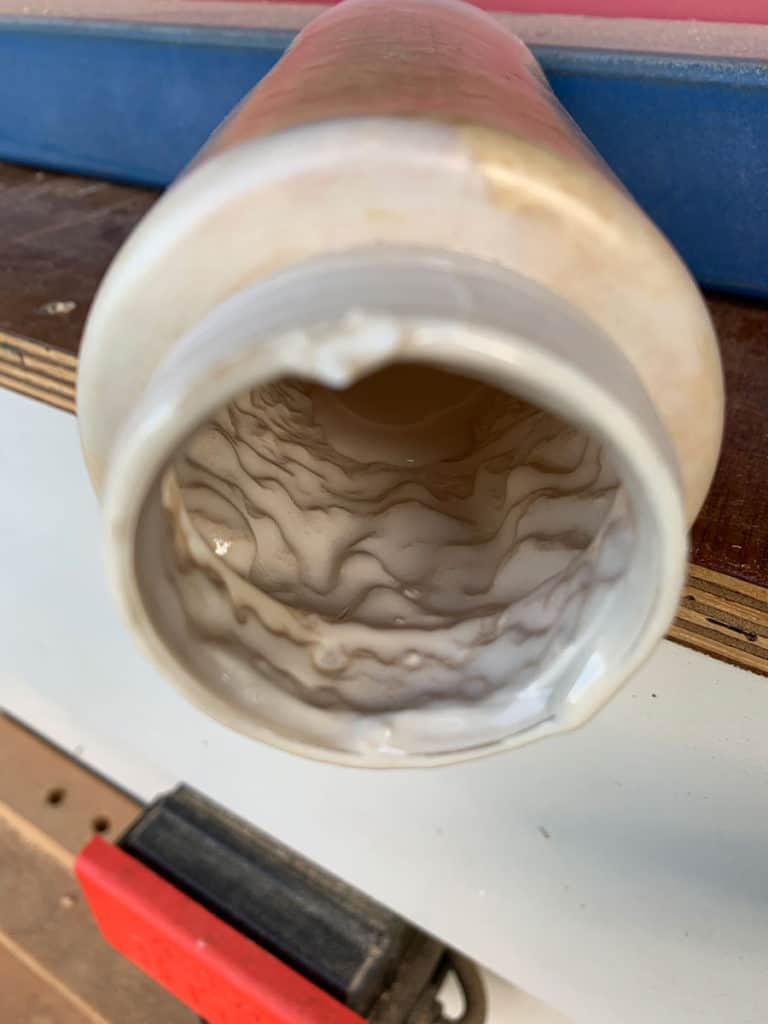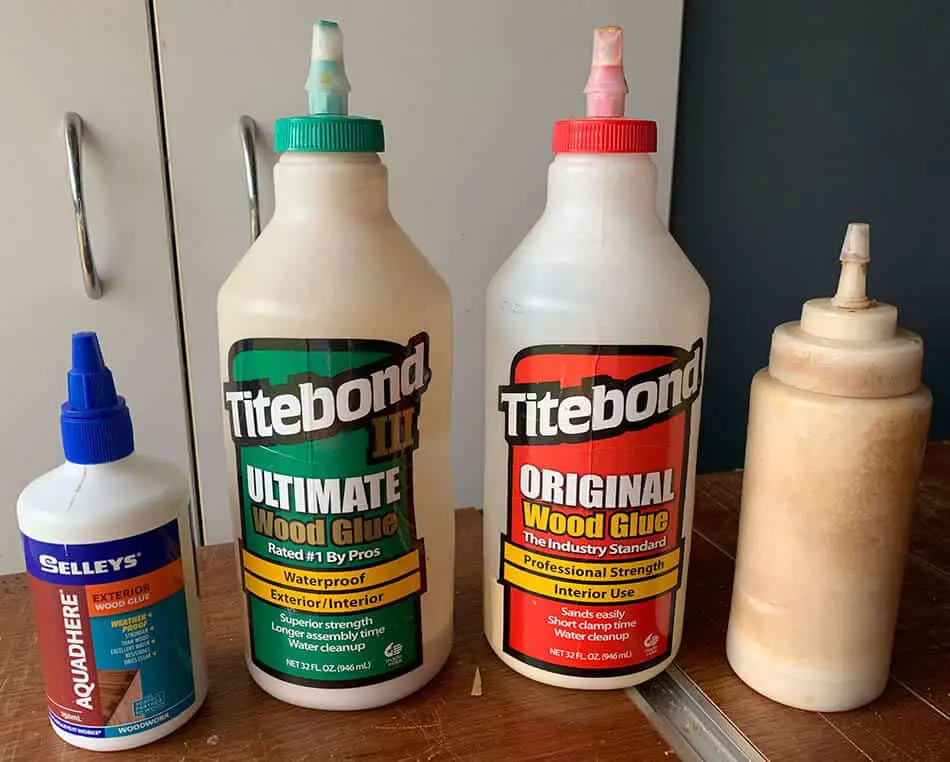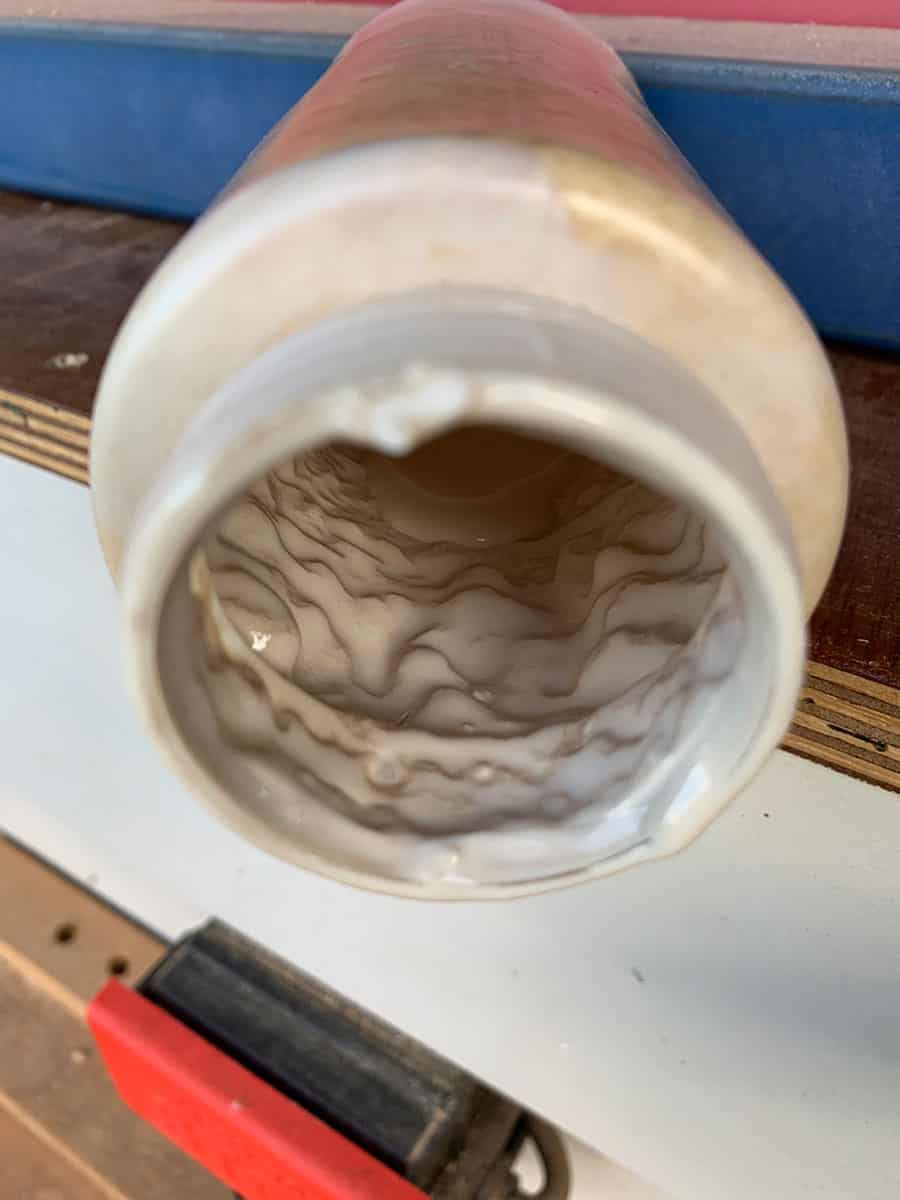As woodworkers, we are always using wood glue and this commodity is a must-have in every woodworker’s shop. The other day a friend of mine said they experienced some extremely cold weather and he said to me, my wood glue froze. This is a question I have had to answer for many woodworkers, so I decided to put together this piece to give a comprehensive answer. Is it ok if your wood glue freezes?
Wood glue can freeze and still be thawed out and reused. After this happens 5 times, wood glue may start to break apart or separate and become unusable. Wood glue needs to be stored in a warm spot or even inside your home when not in use.
Let me explain more about what happens from thawing out more than 5 times.
During freezing temperatures, it can be very hard to store and work with wood adhesives. Woodworking glue has a lot of solvents and additives added to ensure that it is flowing and drying as expected. Some of these components include a surfactant and other surfactant components that allow the water and oil components to mix in a single mixture.
When it is extremely cold or when it is freezing, water crystals break. When they break, they distort the structure in which the surfactant molecules developed. This affects the consistency of your glue.
If you have worked with wood glue, you must know that it must have a good consistency for it to work effectively. So when the consistency is affected, the effectiveness of the glue is affected.
After the water crystals break, one may easily assume that heating or warming the glue will restore its consistency. However, when the water crystals break the glue changes structure, warming it will not be necessary to change it back to its initial structure.
Warming does not allow it to reformat the same degree of thawing. But, in some cases, warming the mixture or stirring can help restore its consistency. So what are the effects of cold temperatures on wood glue?

Effects of Extreme Temperatures on Wood Glue
Chalking
When the glue is exposed to extremely cold temperatures, it runs the risk of chalking. If you have worked with wood glue on a cold day, you may notice that the surfaces where you have applied the glue appear whiter than before; this is known as chalking.

Chalking occurs when the glue dries up and leaves a dried film. The film is white, and that’s what is known as chalk. When you notice this film, it is a sign that your glue may not work as well as you would want it to.
It should be noted that different glues chalk at different degrees. For instance, the TiteBond Aliphatic Resin will chalk at 50 degrees. When you are looking for glue to work with at low temperatures or during winter, you should consider the rate at which it will chalk.
The lower the temperatures, the glue can stand the better. You can identify the degree to which the glue will chalk by reading the storage recommendations that are always on the pack. From previous experience, this glue works very well.
Clumping
When the glue is left in the cold for too long, you may notice that it is clumpy. This particularly happens when the adhesive has been exposed to frost.
Clumping affects the consistency of the glue, and it can be impossible to work with the glue at that state. However, before you throw away the glue, stir it.
In some cases, stirring the glue gets rid of the lumps, while in some cases it doesn’t. If you stir and the glue still doesn’t work, try adding some water and stir.
As you stir, add water up to 5%, and make sure that you are working in a room whose temperatures are controlled. Some glues will restore their consistency after this process, if it does not restore its consistency, it’s time to count your losses.
Glued Joints Loose Strength
When you are using wood glue, make sure that the joints that you bond remain together. It can be very hard to achieve this when you are trying to glue these joints during winter when the temperatures are below the recommended temperatures for the storage and use of the glue brand you have chosen.
When using these glues, you may run the risk of compromising the adhesiveness of the glue. You need to identify the right glue that can work well in these extreme conditions or wait until the temperatures are high or work in a temperature-controlled area.
Takes Longer To Dry Up
When working with wood glue, you want your joints to dry up as soon as possible. Normally, wood glue takes 30 minutes to an hour when clamping unstressed joints. Stressed joints take a day to dry up and clamp.
Take a look at my article explaining why wood glue won’t dry.
You will notice that when you are working with glue in cold temperatures, it takes longer to cure. In some cases, the glue may even take a week to dry up. This slows down the pace at which you can work.
You cannot continue with a project if the glue fails to dry up as fast as you want it to dry. In freezing temperatures, the glue may fail to dry, and instead, it may chalk up, which prevents it from serving its purpose.
My Wood Glue Froze; What Do I Do?
Stir the Glue
Dependent on the type of glue you are using and the extent to which it is frozen, stirring it can restore its consistency. In most cases, when the glue is slightly frozen, you can stir it and use it.
However, you should start by testing it to ensure that you do not compromise your project while you can easily buy new glue. Once you have stirred the glue, check to see if the consistency is suitable and also check to see if the glue works.
There are some cases where the glue may get its consistency back but not work effectively, so testing it should always be a priority before using it in a sensitive project.
Freeze/Thaw Cycles
You will find instructions that guide you through the freeze-and-thaw cycle in a lot of glue containers. A lot of wood glues in the market today can survive a few freeze and thaw cycles for around 5 times only.
To unfreeze the glue, allow it to warm up at room temperature and then stir it. Stir it up continuously until you notice a change in consistency and color.
If you notice that the glue looks like cottage cheese, it has frozen for too long and should be disposed of. If it regains its initial color, then it means that the glue can be used.
You also need to check the consistency of the glue. If it has an even consistency, then it may be an indication that it can be used. If the glue is lumpy even after stirring, then you should dispose of it.
How to Store and Work with Wood Glue When it is Cold
Winter takes up a long period of the year. To be safe, I highly recommend you identify how you can store the glue so that it does not freeze if you are likely to be in one of the colder climates.
If you are working with this glue, you need to identify how you can continue working with these extreme weather conditions. See this article on storing wood glue. So how do you store wood glue, and how do you work with it during cold conditions?
Temperature Controlled Rooms
If you have a large stock of wood glue, you should store it in temperature-regulated storage. Ensure that the temperatures in that room are within the temperature range that is recommended by the manufacturer of the glue that you choose to use.
As long the glue is within the manufacturer’s recommended temperatures, and it does not stay longer than its expiry date, it will always be in good condition.
Although a great option, not many of us have this facility available. Instead, I would take my glue into the house when I know the cold is coming.
Work in a Temperature Controlled Room
If you are working with glue during winter, you should look for a warm room to work in. You can have a solar panel to warm a room or choose to use the AC system.
Warm the Wood before Use
Although this may sound silly, if you have wood that is warmer, the glue will run better and lead to stronger joints. When you are working with glue in cold conditions, it may dry up slower than you would want it to. However, if you preheat the wood, it will ensure that the glue works as effectively as it should.
Choosing the Right Wood Glue to Work in Cold Conditions

If you intend to work in cold conditions, you should try to choose a glue that tolerates the cold more. This is the glue that I use and will not freeze and one that works well when it’s cold. Here are some of the factors that you need to consider when picking your glue:
Chalk temperature
When deciding on the glue to use in these conditions, check the chalking temperatures. You should find a glue brand that takes long before it chalks. Almost all glues will chalk when exposed to extremely cold temperatures, but they chalk at different rates, and you need one that takes long before it turns.
Freeze-Thaw Stable
There is a very high likelihood of your glue freezing. You want to make sure that even if it freezes, you can take it through the freeze-thaw process. Not every glue brand will remain stable after this process, so make sure that you pick out one that remains stable after it has gone through this process.
Secondly, you need to identify the glue which can go through more than one freeze and thaw process and remain stable just in case you need to unfreeze your glue more than once.
Cure Time
The cure time of glue determines how long you will have to wait for the glue to dry. You need glue that will dry up fast even in extremely cold conditions.
Take a look at my article explaining why wood glue won’t dry.
Hopefully, this article has been helpful to you.




